Adriano Aguzzi is prion researcher, director of the Institute for Neuropathology at the University Hospital (Universitätsspital) Zürich in Switzerland, member of several academies and a self-professed champion of publication ethics. Critics of his papers are described as a lynch mob and “lowlifes”, because apparently all those data irregularities do not matter in the greater scheme of things. Aguzzi’s prion research namely saved many lives. Or so he says.
The image integrity sleuth Elisabeth Bik now followed up on some year-old whistleblower concerns once posted on PubPeer. Back then, Aguzzi and his coauthors reacted with aggressive insults towards his critics. That said, every group leader can unknowingly become victim of a rogue PhD student or postdoc. But evading responsibility when faced with evidence of data manipulation, refusing to correct the scientific record while viciously attacking your critics is not an ethical response. Some define it as research misconduct. It seems, however, that Aguzzi has changed his stance now.
Update 14. and 21.12.2019: Aguzzi now announced to sue me for defamation. His inspiration comes from my sentencing in Berlin court over the deadly trachea transplants performed by Paolo Macchiarini and assisted by Philipp Jungebluth (the plaintiff). Aguzzi wrote this in the comment below:
“I will have no option but a lawsuit. Get prepared for another conviction, and start saving for your legal expenses. You may learn your lesson this time.”
Now Aguzzi made his threat official. He demands an immediate removal of this article and all tweets referencing him, my lifelong commitment never to say anything critical about him, otherwise he will pursue a lawsuit, with damage compensation of €15,000. A translation of this letter is provided at the end.

Readers of my site might recall that Aguzzi as panel member recently awarded the France-based German cancer and ageing researcher Guido Kroemer with the €1mn “Nobel Lombardo” (read here), despite or maybe actually because of Kroemer’s notoriety as peddler of Photoshopped research data. When awarding Kroemer, Aguzzi had no problem joining a quasi-all-male panel with the most toxic peer of all: Carlo Croce, with 9 retractions so far and a lost lawsuit against his critic David Sanders and the New York Times. To be fair, Aguzzi left the panel afterwards, officially to make room for women next year.

Aguzzi’s world is weird. The Zürich professor occasionally claims having both MD and PhD degrees, but his own CV proves that he never did any PhD training, but graduated as MD in 1983, while on leave in USA during his medicine studies in Switzerland and Germany. In fact, Aguzzi explained that he sees his Doctor honoris causa (Dr h.c.) from University of Bologna as a kind of quasi-valid PhD degree. It is not really the same, years of researching in a lab and defending a doctorate thesis versus dressing up in a fancy hat for a party organised by admiring peers.

Update 27.12.2019. Aguzzi insists his Bologna degree is a PhD, even if a honorary one. Actually, what his own diploma says is that he received a “diploma di Laurea”, which is equivalent either to a Bachelor or a Master degree. In Italy, laurea graduates are traditionally addressed as “dottore” (or dottoressa), but a PhD degree is called in Italy “dottere di ricerca”, and is not to be confused with the dottore of the laurea. Hence, according to the diploma he posted, Aguzzi seems to have only a BSc h.c. or a MSc h.c. title from the University of Bologna, and not the honorary PhD at all.

But now, let’s discuss Aguzzi’s scientific record. It seems, his worst enemies are the envious lynch mob “lowlifes” who discuss his papers on PubPeer. Like here:
Johannes Haybaeck , Mathias Heikenwalder , Britta Klevenz , Petra Schwarz , Ilan Margalith , Claire Bridel , Kirsten Mertz , Elizabeta Zirdum , Benjamin Petsch , Thomas J. Fuchs , Lothar Stitz , Adriano Aguzzi Aerosols transmit prions to immunocompetent and immunodeficient mice PLoS Pathogens (2011) doi: 10.1371/journal.ppat.1001257
In July 2013, an anonymous PubPeer critic voiced these concerns:

“Figs 3 and 4 use four differently cropped, exposed and rotated images for the JH-/- (Fig. 3) and c3c4-/- (Fig. 4) mice. Is one of these mice both the same?
Fig. 5E left lane has been spliced onto the gel.
Fig. 5G right panel. Oddly blotchy pale, pixellated background with less detail than for the dark matter in the lanes. Multiple straight line effects at edges of bands. This gel appears to have been composed from multiple individual components inserted into a lower resolution background.
Fig. 6C left panel. Right vertical edge has a jaggie revealing that a shorter lane has been spliced in.
Fig. 6D right panel. strong splice between lanes 6/7″
The commenter also wondered if it made sense to declare that every single author has contributed everything to the paper.
Aguzzi immediately announced to investigate, and promised to share the results:
“My policy is that all raw data be kept securely for at least 10 years, hence I foresee no problems with data retrieval. I will post the results of the audit.“
More than two years, passed, and in November 2015 Aguzzi replied again:
“I desisted from my original intent to publish further materials on this forum once it became clear that some of the self-appointed “peers” are more interested in mud-slinging than in post-publication review and quality control of science. I see no need to defend my work against a group of anonymous detractors who negate a priori my integrity, yet are not even prepared to identify themselves. Suffice it to say that Mathias Heikenwälder and I have gone carefully through all original data and we confirm that none of the alleged “manipulations” were performed. We stand fully by the findings which we have reported. Both Mathias and I will be prepared to make additional materials available to whoever will contact us directly and identify himself/herself, be it the Editor of PLoS Pathogens or anybody else. What we are NOT going to do is to engage in shouting match with anonymous individuals who make libelous and unfounded accusations. Please note that I will NOT make any further comments or communications on this forum.“
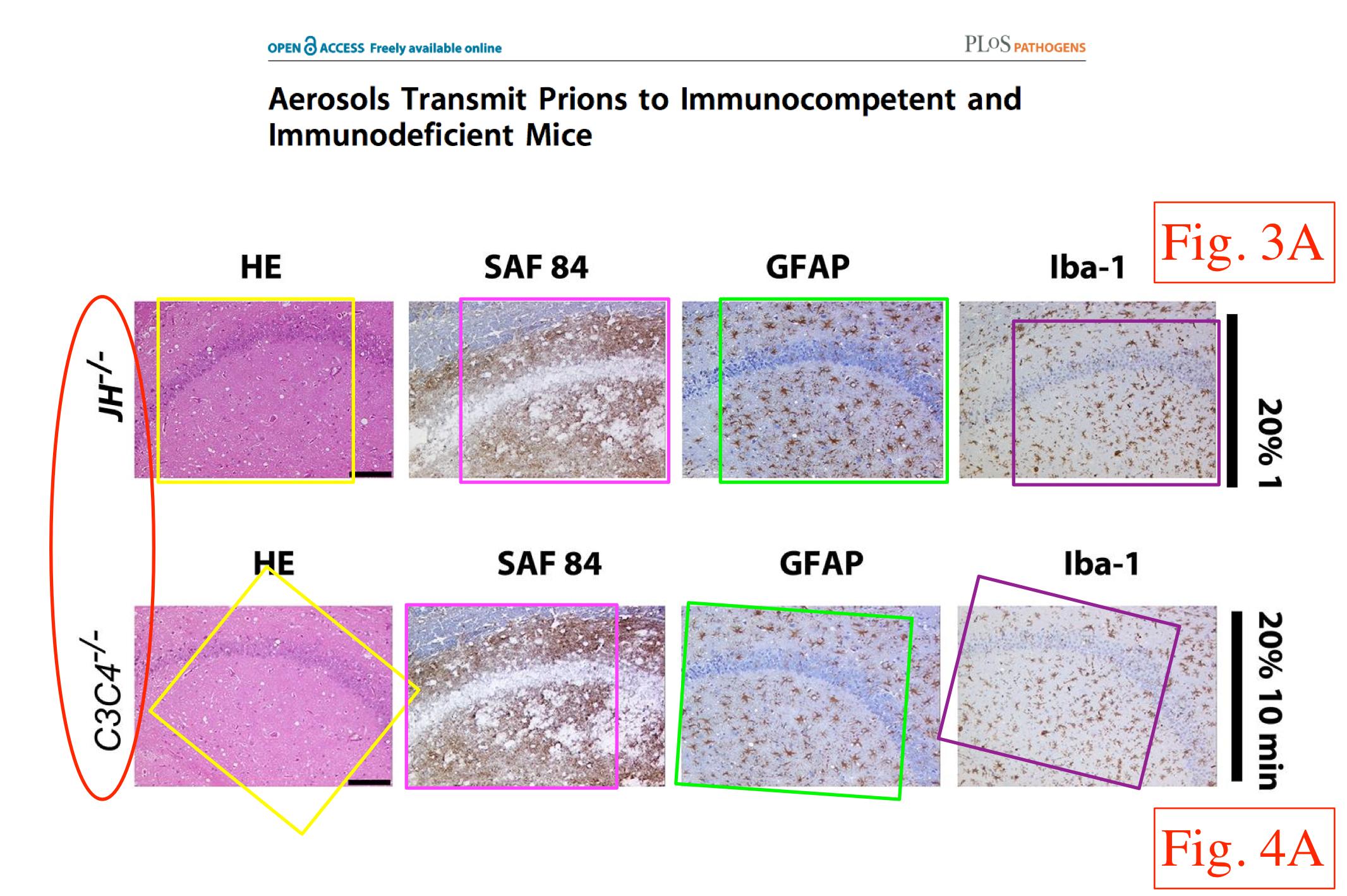
The anonymous commenters pleaded with Aguzzi to reply again, and eventually the paper’s first author Johannes Haybäck (now director of Institute of Pathology at the University of Magdeburg in Germany, with a second affiliation at University of Graz in Austria), did:
“I apologize for not having reacted earlier, but I had not understood the precise nature of the issue with the contested histology figures. I agree with that a mistake may have occurred while preparing the histology panel for publication. These are BSL4 experiments, which are carefully documented for reasons of both biosafety and animal welfare. I have planned to travel to Zurich on Dec. 7th in order to re-inspect all histology together with a coworker from the Aguzzi lab. The paraffin blocks from which the histology was prepared are certainly still existent, and I am confident that the issue can be clarified. If indeed there are errors, a correction will be published in the PLoS Pathogens paper. “
In February 2015, PLOS Pathogens issued a Correction, for figures 3, 5 and 6. On PubPeer, Aguzzi then posted a lengthy comment, where he shared his views on anonymous post-publication peer review. He regretted that his “former student Johannes Haybäck committed an error while mounting Fig. 3A” , but saw little responsibility on his own part. Instead, this:
“Now, I have been active in research since 1982. Over the past 34 years, I have published >450 paper. Notwithstanding the error in Fig. 3A, the Haybäck paper is one of those that I am proudest of. Our discovery of aerosols as prion vectors has led to a significant reassessment of the safety procedures for lab work with prions. By drastically improving the safety of lab workers, this work will likely save human lives. […]
In summary, if my scientific legacy will turn out to be a better protection from occupational hazards for students, postdocs, and lab technicians, well, that is a legacy that was worth working for, and one that I am proud of.”
Well, it is not like lab personnel used to get sick and die from prion exposure in epidemic proportions until Aguzzi’s life-saving paper came along. Come to think of it, there never were any cases of a dangerous prion infection in the lab. Aguzzi was exaggerating his scientific legacy, again.
That same whistleblower flagged in July 2013 other Aguzzi papers on PubPeer, but not even corrections have happened. Like here:
Brady Michel , Adam Ferguson , Theodore Johnson , Heather Bender , Crystal Meyerett-Reid , Bruce Pulford , Adriana Von Teichman , Davis Seelig , John H. Weis , Glenn C. Telling , Adriano Aguzzi, Mark D. Zabel Genetic depletion of complement receptors CD21/35 prevents terminal prion disease in a mouse model of chronic wasting disease Journal of immunology (2012) doi: 10.4049/jimmunol.1201579
Bik provided good visualisation of the problem, namely some very insolent reuse of western blot bands in Figure 4:

The last author Mark Zabel, prion researcher at Colorado State University in USA, replied immediately with this comment:
“We have commissioned an independent forensic analyses of the figures in this manuscript and will update this post with a report when it is complete. For now, we are sharing all of the raw data images used for these experiments and to create the figure here https://www.sugarsync.com/pf/D6450680_0347642_9170813
We are committed to the highest scientific rigor and integrity in our research. We stand by the data and the conclusions drawn from them in the paper, and will submit an errata to this paper to update the figure if these duplications are confirmed.”
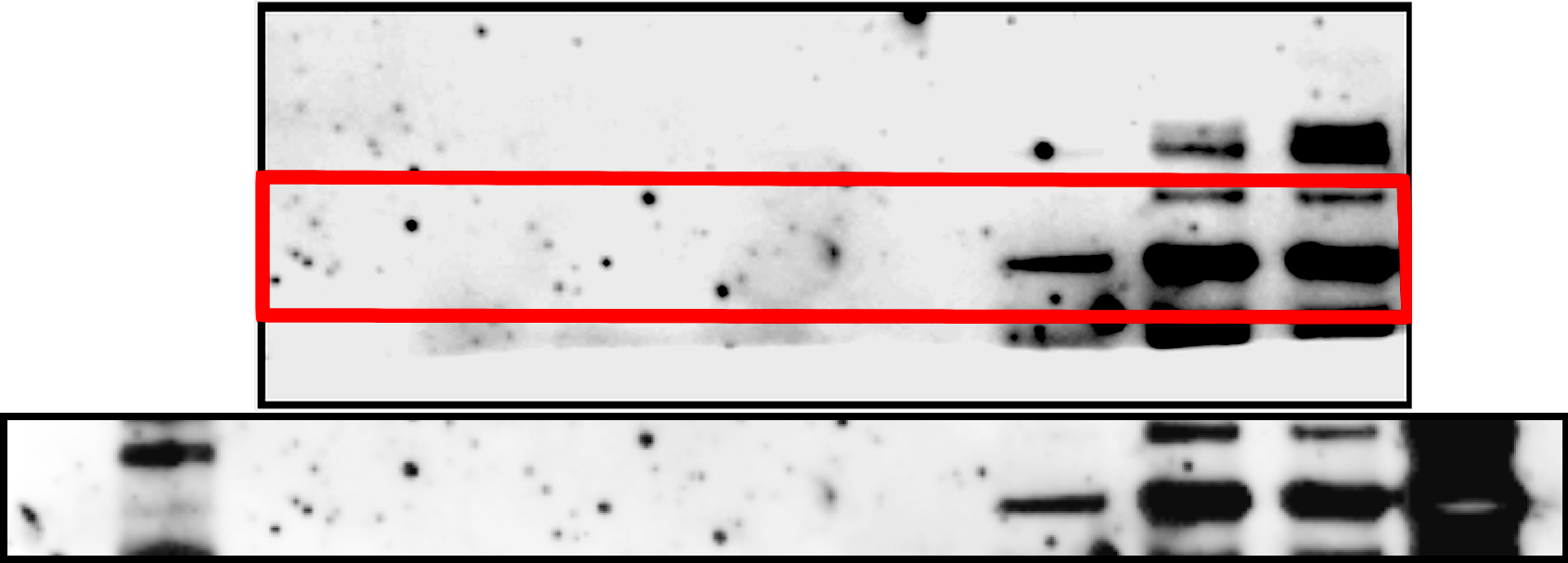
Another PubPeer critic however retorted:
“the problem already exists in the raw data since the two first Ig H blots (page 7 of above pdf) are actually manipulated versions of the same blot.”
Zabel then provided his final decision in October 2014 that nothing at all wrong was with the paper. He explained that loading controls were irrelevant anyway, and even accused the whistleblowers of having fabricated evidence in Photoshop:
“An independent analysis of the files and blots, as well as interviews with authors of the original paper, concluded that “duplication or manipulation of raw blots was deemed unlikely, unintentional or inconclusive. Explanations given by the technicians who performed the experiments are plausible and no further action was recommended. In fact, it was demonstrated that unrelated blots could actually be made to look extremely similar by the same manipulations that raised concern about the images published in the manuscript.
In short, it could not be determined definitively whether these images were inadvertently duplicated blots, but that it was unlikely that any intentional manipulation of the blots had occurred. Moreover, the bands in question were mainly controls, which would not have significantly altered data interpretation. We therefore stand by the data and the conclusions drawn from them in the manuscript.“
Of course the paper was not corrected, and rest assured it never will be. Journal of Immunology made it their business model of doing nothing at all about falsified research (read here and here). How else can infectious diseases be cured if not with the modern technology of Photoshop?
Another coauthor of Aguzzi was more constructive, after Bik flagged a badly manipulated figure. Background patches were copy-pasted, presumably to cover up results which stood in the way of the fight against a deadly infectious prion disease.
Ciriaco Ligios, Maria Giovanna Cancedda , Antonello Carta , Cinzia Santucciu , Caterina Maestrale , Francesca Demontis , Mariangela Saba , Cristiana Patta , James C DeMartini , Adriano Aguzzi, Christina J Sigurdson Sheep with scrapie and mastitis transmit infectious prions through the milk Journal of Virology (2011) doi: 10.1128/jvi.02022-10
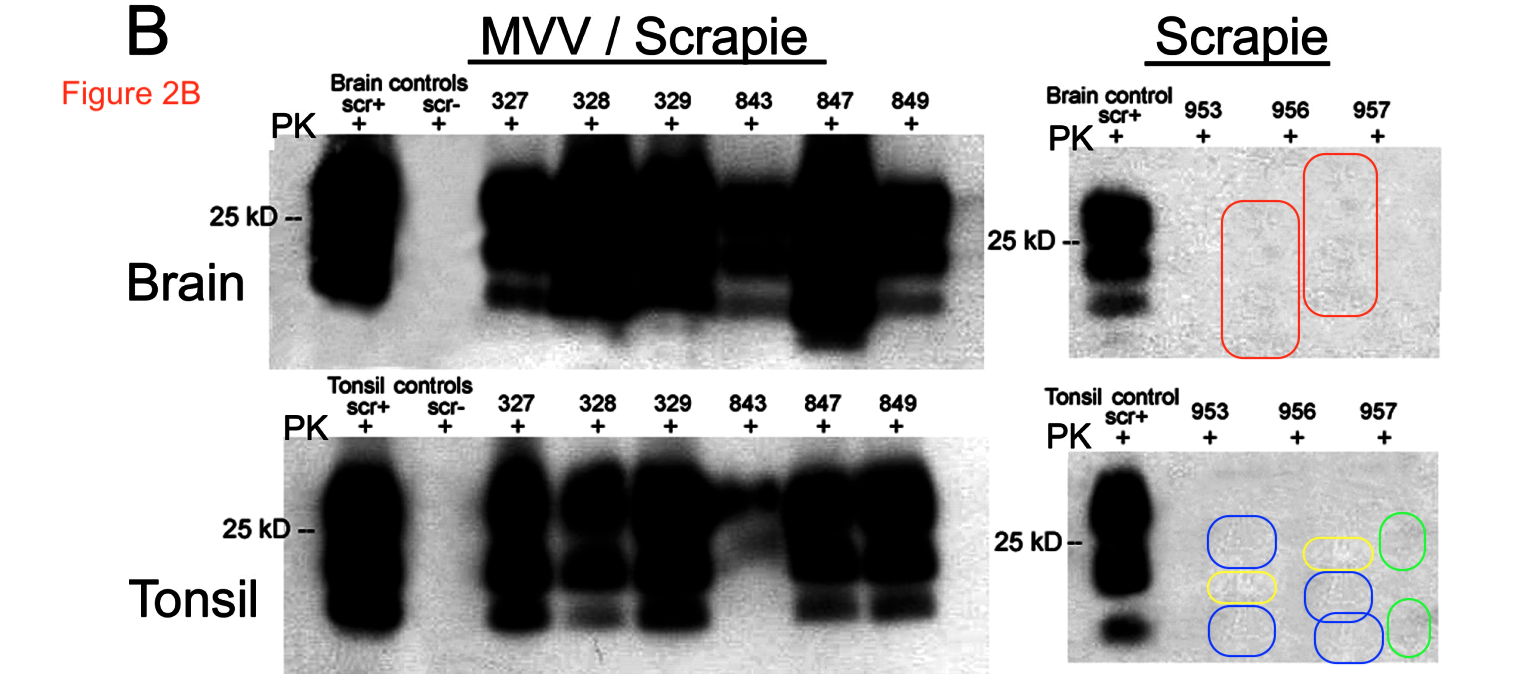
Christina Sigurdson of UC San Diego in USA replied 2 days later:
“We are looking into these blots as a high priority.”
Let’s hope Sigurdson will not pull a Zabel on this one, and that Journal of Virology is more ethical than Journal of Immunology, which is actually not that difficult. In the next case however, it is perfectly clear that the society journal Blood is not interested in a correction: Blood has a policy of ignoring everything older than a year or so, regardless of how bad. Hence, no need for Aguzzi or his Universitätsspital Zürich colleagues to bother about this reused and shifted image:
Stefan Baenziger , Mathias Heikenwalder , Pål Johansen , Erika Schlaepfer , Ursula Hofer , Regina C. Miller , Simone Diemand , Kenya Honda , Thomas M. Kundig , Adriano Aguzzi , Roberto F. Speck Triggering TLR7 in mice induces immune activation and lymphoid system disruption, resembling HIV-mediated pathology Blood (2009) doi: 10.1182/blood-2008-04-151712
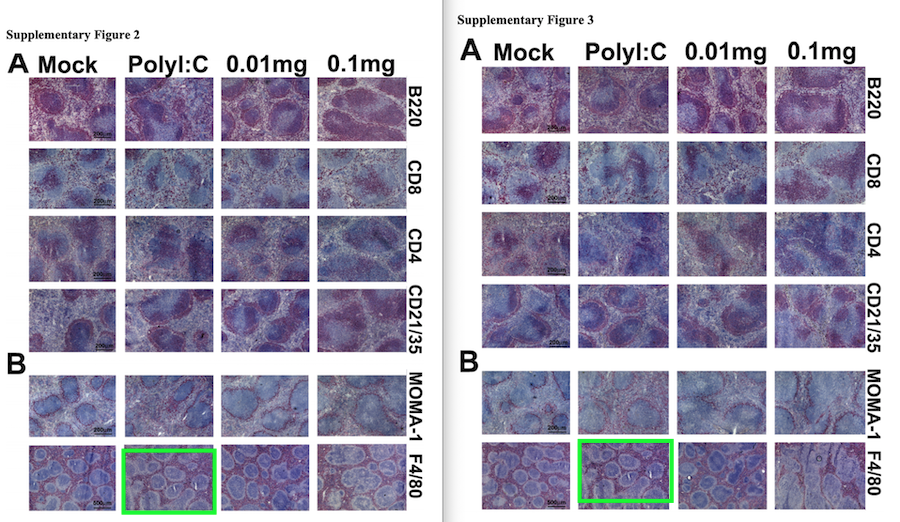
Being such an important man, and likely unbothered by the journals, Aguzzi so far saw no reason whatsoever to address the concerns posted in parallel in 2013 regarding this paper:
Megan Larson , Mathew A Sherman , Fatou Amar , Mario Nuvolone , Julie A Schneider , David A Bennett, Adriano Aguzzi, Sylvain E Lesné The complex PrP(c)-Fyn couples human oligomeric Aβ with pathological tau changes in Alzheimer’s disease Journal of Neuroscience (2012) doi: 10.1523/jneurosci.1858-12.2012
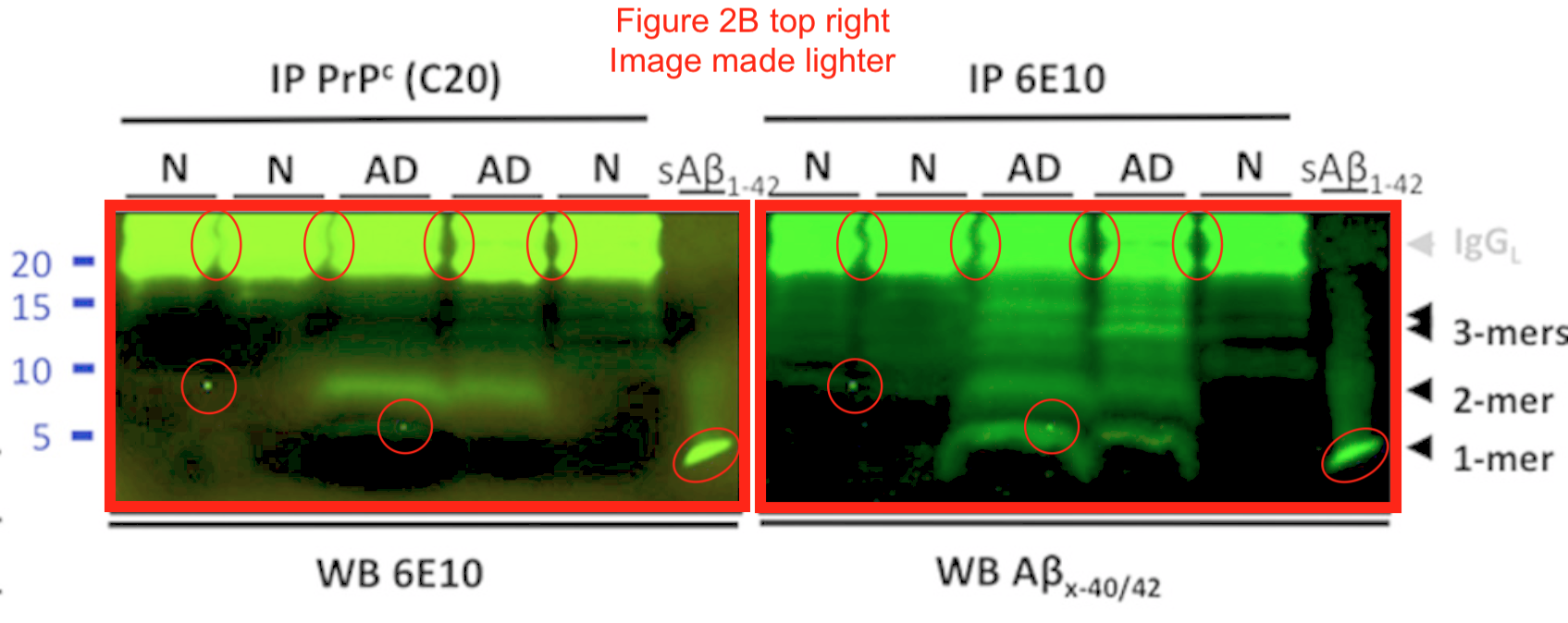
Also the last author Sylvain Lesné of University of Minnesota in USA did not reply. Maybe he or Aguzzi will now, after Bik provided some illustrations? Or is this evidence also falsified in Photoshop, like previously uncovered by Zabel? How is this approach to curing Alzheimer’s to explain:
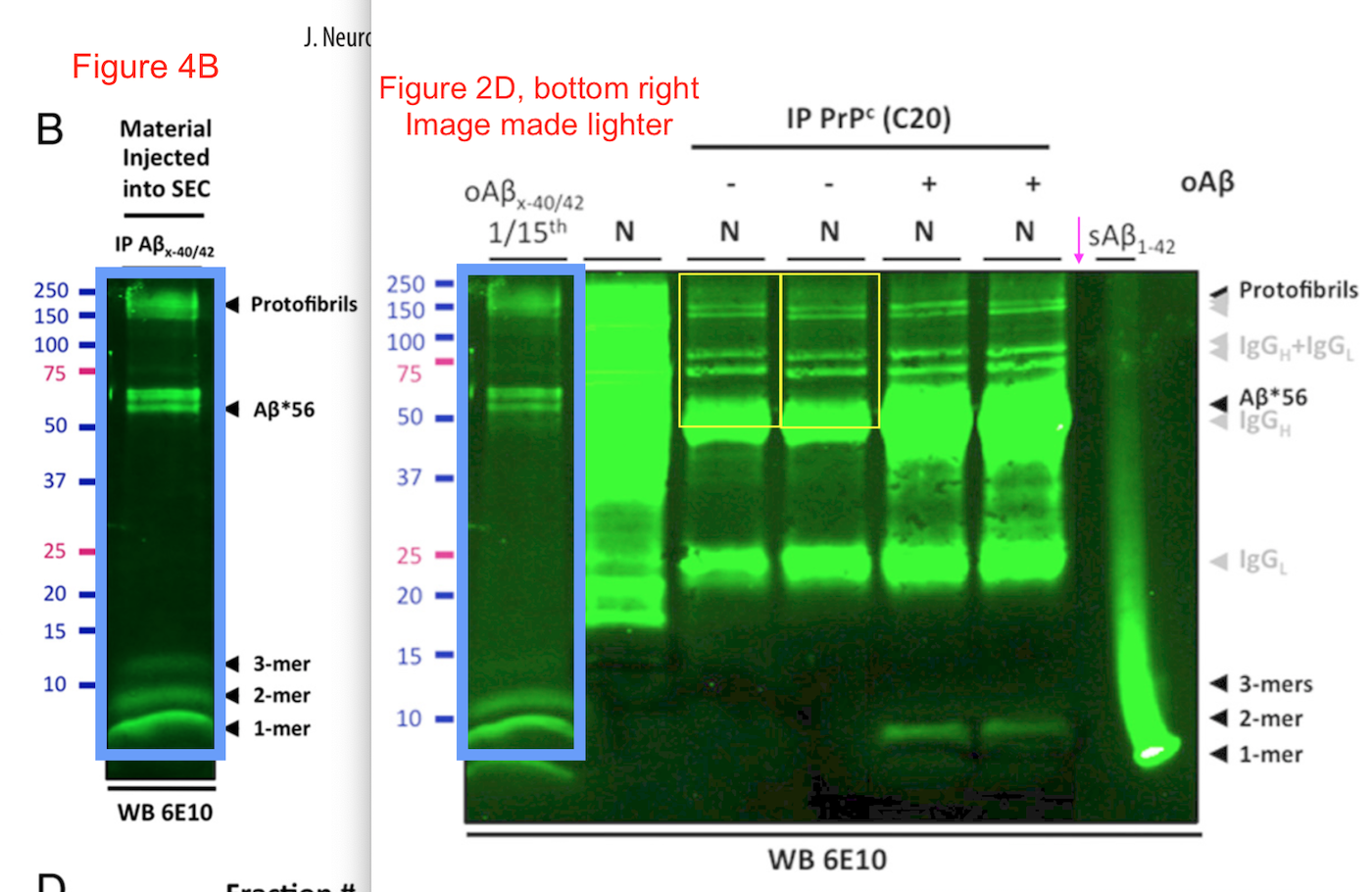
Thin magenta arrow. A sudden, sharp vertical line between the two right-most lanes suggests an undisclosed splicing.” “similarity between figure 2D, lane 1 and Figure 4B left panel, as shown with thick blue boxes.”
Bik’s concerns about this Nature paper from Aguzzi lab were so far not dignified with a comment:
Michael B. Fischer , Christiane Roeckl , Petra Parizek , Hans Peter Schwarz , Adriano Aguzzi Binding of disease-associated prion protein to plasminogen Nature (2000) doi: 10.1038/35044100
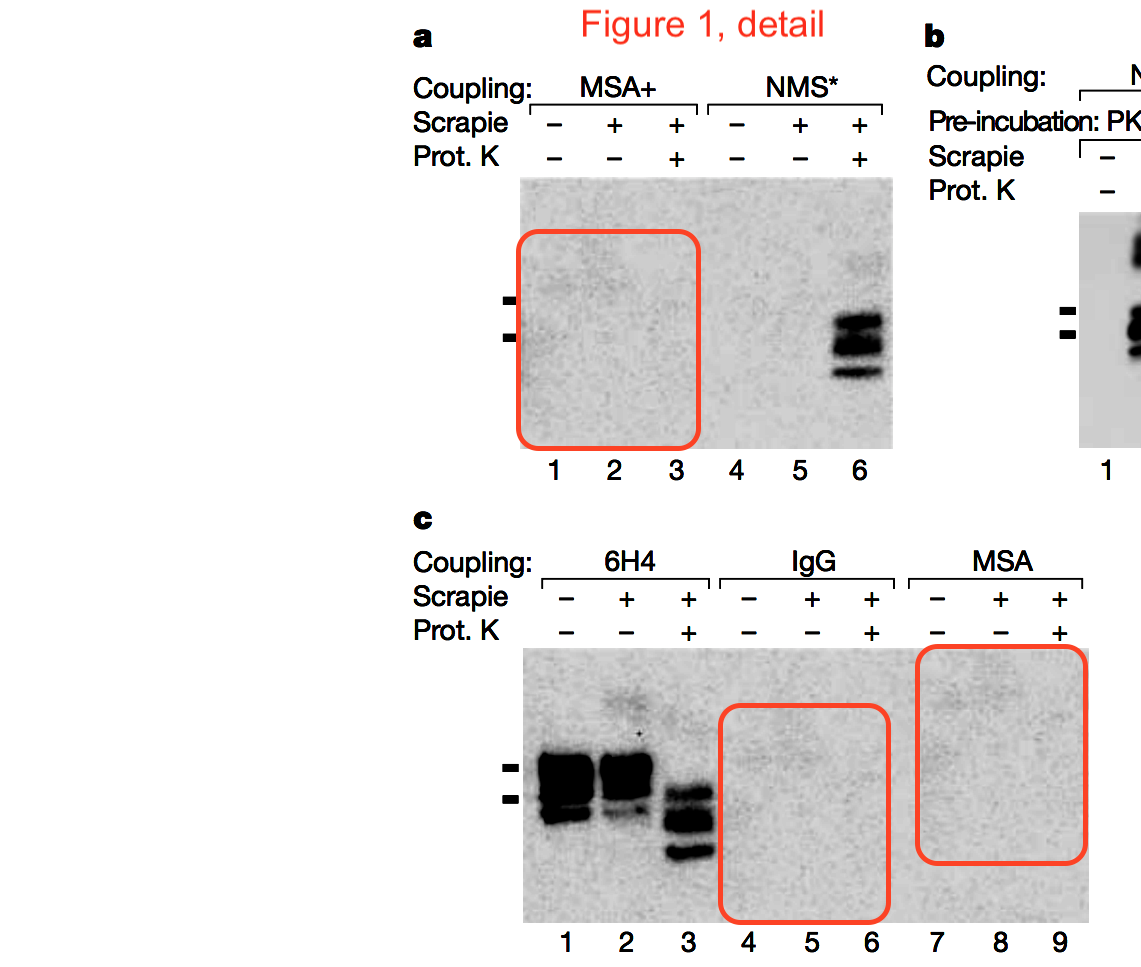
A paper containing such a falsified figure would not be not reliable anymore. Falsifying data in Photoshop, regardless which of the authors did it, does affect the conclusions, and it is the responsibility of the corresponding author to act upon the evidence. It does not matter how many lives Aguzzi thinks he has saved with his prion research.
Update 13.12.2019. Aguzzi has discussed this Nature figure in the comment section below, and now first author Michael Fischer replied by email:
“We had been able to answer questions about the paper to the satisfaction of everyone (Nature and University of Zurich) 4 years ago. I therefore do not want to comment again.“
Aguzzi did reply to this commenter, who raised unspecified concerns about “Figures 1, 3, 4, 5” in March 2017. The first author was meanwhile finally tasked with retrieving raw data.
Caihong Zhu, Uli S. Herrmann , Jeppe Falsig , Irina Abakumova , Mario Nuvolone , Petra Schwarz , Katrin Frauenknecht , Elisabeth J. Rushing , Adriano Aguzzi A neuroprotective role for microglia in prion diseases The Journal of Experimental Medicine (2016) doi: 10.1084/jem.20151000
Back in 2017, the PubPeer critic also voiced concerns about shifted baselines, high mortality among the alleged healthy controls mice, and also this bizarre approach to statistics:
“Experiments are largely underpowered: serve as examples N=4 or 3 from figures 3, 4, which are central to the argument of the paper. The dispersion of the data indicates extensive variability, calling for a substantial increase of the N. I am very surprised these datasets comply with the requirements for normality and homocesdasticty needed for the ANOVA“.

The editors and reviewers at the elite journal somehow missed all that, or just trusted Aguzzi to know what he is doing. Aguzzi’s reply arrived years later, in July 2019, typos his:
“The sentence “I wonder if somebody more expert could have a look at westerns at Figures 1, 3, 4, 5? Some of them look odd to me, but I’m not an expert in picking up image manipulation” provides a vivid demonstratin of everything that’s wrong with PubPeer.
The commenter is unhappy with this publication, most likely because he has some personal beef with one of the authors. However, as much as he would wish to prove the paper wrong, he cannot find any flaws in the figures. Therefore, he claims that they “look odd” to him, hoping that the mob will rise and lynch the authors – or at the very least that something disreputable will stick.
Sadly (but unsurprisingly), the world of research is not devoid of lowlifes. The meanness, spite, the posturing and the defamation under the protection of anonymity, you find them on Reddit and you find them on PubPeer as well.“

That professorial reply to the lynch mob “lowlifes” actually provides a vivid demonstration of everything that’s wrong with Aguzzi. The statistics concerns are actually very much valid, and as for western blots: the loading controls do not always look like they show same gel. Despite Aguzzi et al having written in the methods section:
“To avoid variation in loading, the same blots were stripped and incubated with an anti-actin antibody”
That was apparently a fib, or an honest error of oversight, for the noble purpose of saving lives. Like here, in Figure 5, where an grid was placed to visualise that, sadly, and unlike Aguzzi et al explicitly wrote, GFAP signal and Actin loading control did not derive from same gel:
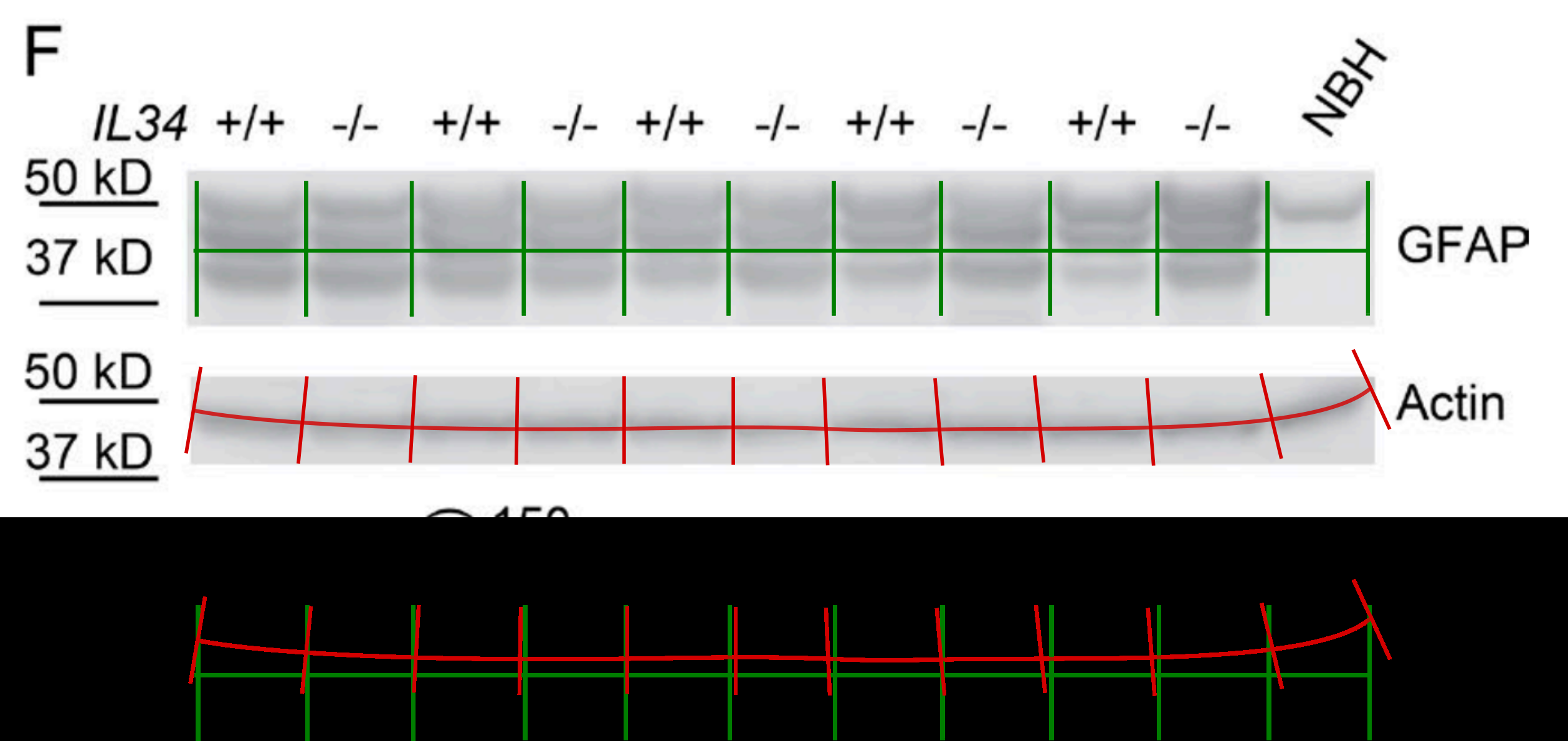
But as we learned before from Aguzzi’s colleague Zabel, loading controls are irrelevant anyway, presumably in prion research at least. Although, Figure 1E does contain undisclosed splicing, in a paper from 2016:
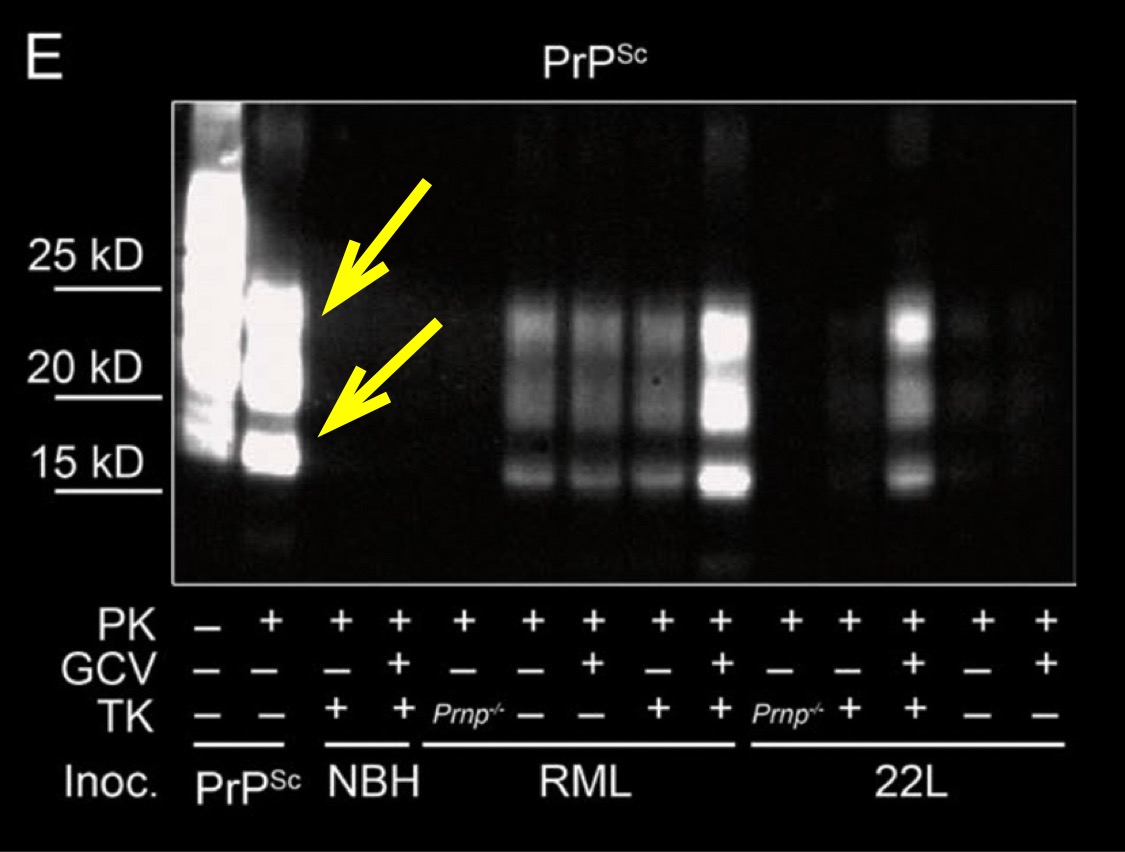
Aguzzi eventually understood that maybe it was he who was wrong. The gels are possible not what they are presented to be. Hence this new reply:
“I agree that this is weird. I’ll try to retrieve whatever original materials are around. My former postdoc Caihong Zhu has recently moved to Shanghai, but his records are meticulous and we are in touch every week. In fact we are still doing a lot of experiments together and he is still maintaining a large mouse colony in my institute. I am confident that he can shed light on this issue.”
With a paper barely 3 years old, the raw data should be available. Different with Aguzzi’s 11 year old paper, flagged by Bik for some very naughty Photoshoppery aimed at extirpating prion disease transmission.
Nicolas Genoud , David Ott , Nathalie Braun , Marco Prinz , Petra Schwarz , Ueli Suter , Didier Trono , Adriano Aguzzi Antiprion prophylaxis by gene transfer of a soluble prion antagonist American Journal Of Pathology (2008) doi: 10.2353/ajpath.2008.070836
Such things as in Figure 1C and 5h do not happen by mistake, those are intentional data manipulations. Regardless of who did it, as as corresponding last author and lab head Aguzzi is very much responsible for what he publishes. And no, having published many papers in Science, Nature and Cell is not an excuse.
Aguzzi warned however:
“Thank you for pointing out these issues. I agree with your concern and I will try to retrieve the original histology slides. I cannot promise that I will find anything though. These experiments were performed >15 years ago. My policy is to retain all original materials for at least 10 years. Older materials have been occasionally retained, but not in a systematic manner.“
Aguzzi also replied in similar vein on another paper, where an image was duplicated without change. That might be one of the rare cases of an honest mistake.
Update: Aguzzi now provided hi-res Figure 1 of the Genoud et al 2008 paper in a comment below. It makes the matter worse, there are even more manipulations in that figure than previously assumed.

Mathias Heikenwalder , Christian Federau , Lotta Von Boehmer , Petra Schwarz , Mareike Wagner , Nicolas Zeller , Johannes Haybaeck , Marco Prinz , Burkhard Becher , Adriano Aguzzi Germinal center B cells are dispensable in prion transport and neuroinvasion Journal of Neuroimmunology (2007) doi: 10.1016/j.jneuroim.2007.09.022
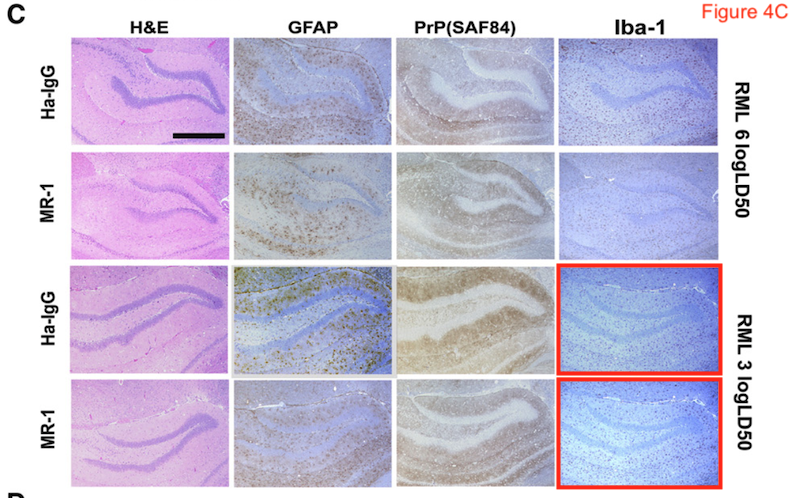
Aguzzi now announced to recover original data and correct the literature. Great start! He also promised to stop calling himself a PhD (something he used to do even in papers and book chapters as corresponding author).

Update 12.12.2019. For completeness, I decided to discuss this collaborative paper from Christian Haass lab at LMU Munich in Germany, coauthored by Aguzzi.
Armgard Uelhoff , Jörg Tatzelt , Adriano Aguzzi , Konstanze F. Winklhofer, Christian Haass A pathogenic PrP mutation and doppel interfere with polarized sorting of the prion protein Journal of Biological Chemistry (2005) doi: 10.1074/jbc.c400560200
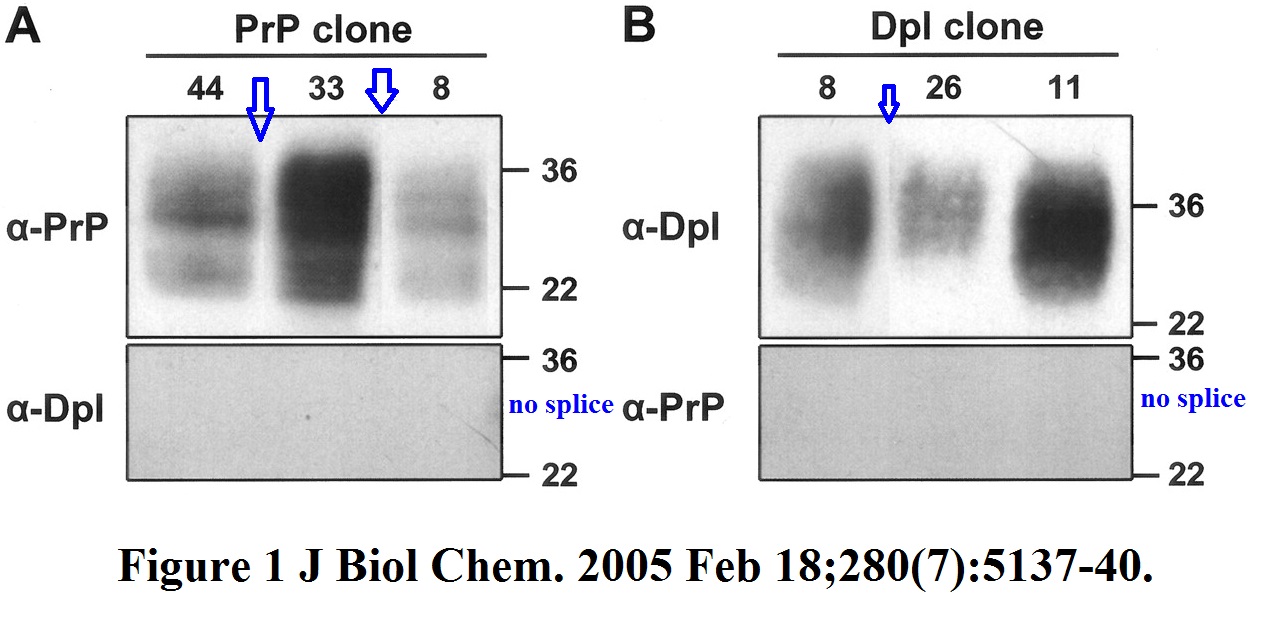
What we see here, is a western blot experiment where the “no signal” analysis was probed on one gel (Dpl in A and PrP in B), but the “with signal” analysis was made on a different, or maybe even several different gels, spliced together. There is therefore no positive control or evidence that any protein at all was loaded on the “no signal” gel. The authors might want to correct this figure, which is otherwise meaningless.
Before reading Aguzzi’s comments below, you might want to prepare yourself with this eulogy in Tagesanzeiger.
“A postdoc of his held last week a lecture at the Institute of a Nobel laureate in Israel, as the neuropathologist Adriano Aguzzi posted recently on Facebook. After the talk, the Nobel laureate told the postdoc: “Adriano should have received the Nobel Prize together with Stanley Prusiner”. This is not correct, Aguzzi continues in his post, “but my ego grew enormously, today it does not fit through the door anymore. “
The article continues to decry the tragedy that Aguzzi was not given the deserved Nobel Prize.
Update 16.12.2019. Another Aguzzi paper is discussed on PubPeer:
M Nuvolone , N Schmid , G Miele , S Sorce , R Moos , C Schori , RR. Beerli , M Bauer , P Saudan , K Dietmeier , I Lachmann , M Linnebank , R Martin , U Kallweit , Ve Kana , EJ. Rushing , H Budka , A Aguzzi Cystatin F is a biomarker of prion pathogenesis in mice PLoS ONE (2017) doi: 10.1371/journal.pone.0171923

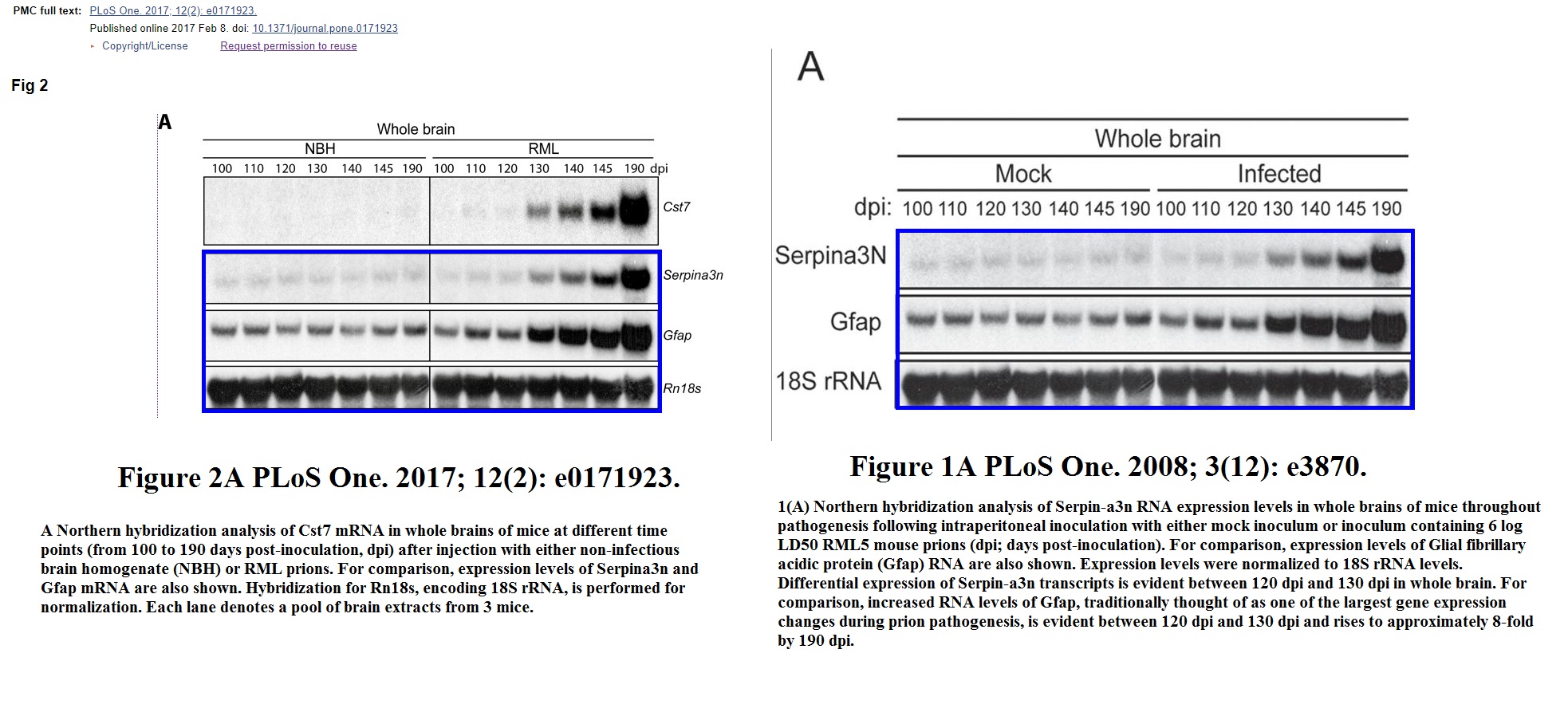
Aguzzi’s reply was:

“It is simply one of the many attacks ad personam that Leonid Schneider (who was recently convicted and sentenced to a stiff pecuniary fine for slander by a German court, and was in addition ordered to pay all legal expenses to the person whom he slandered) is launching against me.
I could ask PubPeer to remove the slanderous comments by Schneider and others. But I will not, because I prefer everybody to see and judge for themselves the level of absurdity, incompetence and meanness of his latest smear campaign. Schneider, don’t delude yourself that I will not fight back.”
Aguzzi sees every attempt to critically discuss his papers as a personal attack, a smear campaign and slander, for which he threatens to sue his critics. This is unfortunately a kind of retaliation which every whistleblower has to deal with. Not sure what kind of signal University of Zürich wants to be sending here.
Update 21.12.2019.
Aguzzi sent me today me this registered letter, the original is shown at the beginning of the article:
Dear Mr. Schneider
You spread untrue claims about me and my employees. I request of you now, informally and extrajudicially, the following acts:
- Please delete your blog entry “https://forbetterscience.com/2019/12/12/aguzzi-and-the-lowlifes”
- Please delete all of your tweets and other online posts which mention my person and my employees
- To refrain lifelong from mentioning my person in the future, from judging, attacking, hinting, speaking of, coercing, and publicising in any form online or otherwise.
This letter is meant as a friendly, unprejudiced request. If you comply with this request I will consider this unfortunate matter as settled and will undertake no further steps.
However, should you do not comply with my request within the next 10 days, you will receive from my legal representative a cease and desist declaration with penalty clause.
As you know from your previous experiences, this will be combined with compensation demands which correspond to the severity of your law violation. We envision a compensation of €15,000, which we intend to donate to a charitable foundation. You probably also know that repeat offenders can expect little understanding from the judiciary.
I sincerely hope that you recognize my benevolent willingness to settle out of court, will comply with my request and save you a lot of trouble.
Sincerely
Adriano Aguzzi

Update 24.12.2019
Christian Schwarzenegger, Univerity of Zürich’s Vice-Rector for faculty affairs and law professor, informed me on 22 December 2019 that the university is not involved with Aguzzi’s announced legal action against me. He however declared:
“the university leadership has initiated an investigation of the accusations you raised. The procedure is as usual based on the presumption of innocence. As soon as we have a report, we will inform you about the next steps.”
Update 22.05.2020
Aguzzi has now been threatening a peer reviewer of his manuscript currently submitted to a journal. The original tweet, where Aguzzi mentioned some gel splicing, has been deleted. But here are screenshots and his follow-up comments:

The questionable Twitter behaviour prompted some PubPeer users to have another look at Aguzzi papers:


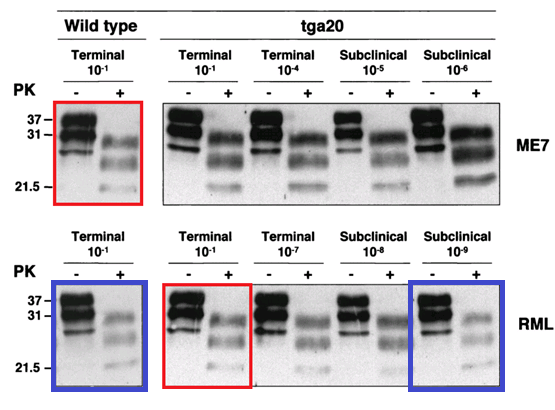
AM. Thackray , MA. Klein , A Aguzzi , R Bujdoso Chronic Subclinical Prion Disease Induced by Low-Dose Inoculum Journal of Virology (2002) doi: 10.1128/jvi.76.5.2510-2517.2002
Whoever did that gel, has a lot to answer for. But also the senior authors liek Aguzzi and Raymond Bujdoso in Cambridge should they think it is not a problem. Another problematic paper was done in collaboration with Max-plank-Institute in Frankfurt, Germany: Heber et al J Neuroscience 2000, other works are straight from Aguzzi’s lab though: Polymenidou et al PNAS 2004 and the vintage paper with his mentor and patron Charles Weissmann, Brandner et al PNAS 1996.

Donate!
If you are interested to support my work, you can leave here a small tip of $5. Or several of small tips, just increase the amount as you like (2x=€10; 5x=€25). Your generous patronage of my journalism, however small it appears to you, will greatly help me with my legal costs.
€5.00




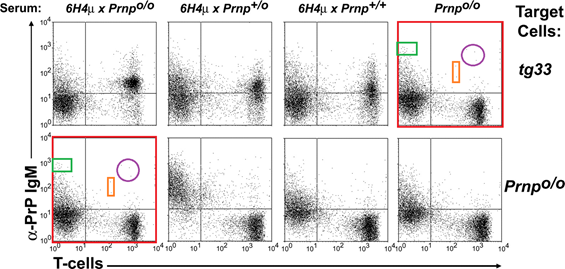
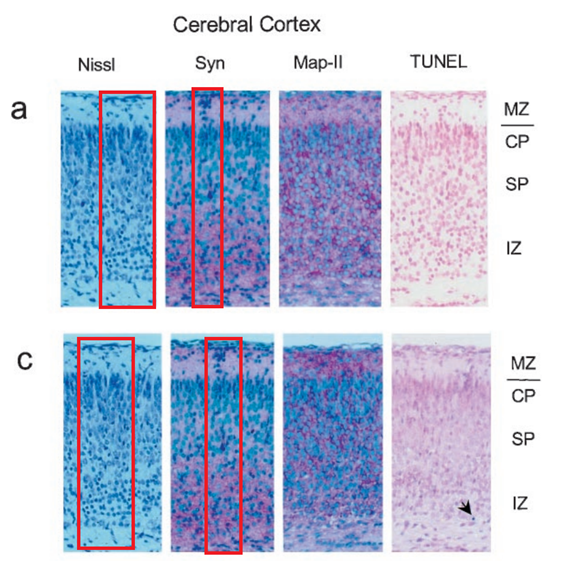

Having criticized Schneider on Twitter, and knowing his vindictiveness, it was inevitable that I would get into his crosshair. The scorn, the ridiculing and the meanness say more about Schneider than about myself.
I think that no scientist is immune from making mistakes. In my research work, I try to be the severest reviewer of my own work. This sometimes gets me in conflict with my coworkers who are often eager to publish their data as soon as possible. But even despite all best intentions and internal quality controls, mistakes can occur and do occur. As fundamental researchers, we dive into uncharted waters, and that carries the inherent risk of being wrong. I am grateful to everybody who points out mistakes in my publications.
Now to the specific allegations:
As for the papers contested by Schneider that were published under my corresponding authorship, I acknowledge that mistakes were done in the histology figures. Those mistakes will need to be corrected, of course. While it is difficult to prove a negative, I have sees no evidence of dishonesty there. Please note that I was made aware of these issues only a few days ago, hence I did not react yet (but I put a note on PubPeer saying that I would look into those.
I cannot vouch for western blots in papers which I did not supervise (and to which I only contributed as a co-author). But I know that the criticized senior authors are looking into these issues with high priority, and I expect them to reply.
As for the alleged doctoring of western blots in papers that were published under my corresponding authorship, I became aware of the critique of the Zhu paper only a few days ago. I will certainly respond as soon as I have retrieved the original membranes. These are recent experiments. My lab’s policy is to retain all primary data (and whenever possible all residual materials) for at least 10 years after any publication. It might even be possible to have an independent person repeat the Western blots if no clarity can be attained from re-exposing the membranes.
The Fischer 2000 paper has been re-examined in detail in 2015, after Elisabeth Bik and Nature alerted me of this issue. While it is impossible to conclusively prove a negative, all evidence indicates that the blots were not doctored. The high-resolution original images (fortunately available despite having being performed >20 years ago) suggest that the similarities between the blots are just similarities, not identities (and Nature agreed with me). However, I must say that the situation was not resolved beyond all doubts, and disagreement remains between me and Dr. Michael B. Fischer. I shall be happy to provide the full documentation to whoever asks. In fact, I have already submitted it to Elisabeth Bik (who reported this issue on PubPeer) and I am awaiting her verdict. To me it’s somewhat comforting that these results were reproduced both in my lab and by others – although it’s clear that this would not change the fact that if the blots were doctored, then they were doctored and that’s unacceptable.
As for my academic degrees, I from the University of Freiburg with a medical doctorate in 1986. I was keenly conscious of the limitations of a medical training, and I wanted to learn to be a scientist. At that time, alas, there was no MD-PhD program, hence I acquired my scientific skills in the context informally. I attended the legendary course of Charles Weissmann in molecular biology in Zurich (every day at 7:30 AM) and I learned how to make transgenic mice with Erwin Wagner in Heidelberg and then in Vienna. I have received three doctorates honoris causa in medicine (Liege), natural sciences (Bologna) and veterinary medicine (Teramo). I have always pointed out that these latter degrees were awarded because of my research merits and not in the context of a formal curriculum. Indeed, in my official online CV my title is (and has always been) “MD, PhD hc, DVM hc”. See: http://www.neuropathologie.usz.ch/ueber-die-klinik/Documents/Aguzzi_CV.pdf?_ga=2.30923128.691204708.1576148478-957777250.1530909092
In the primary page of my institute (http://en.neuropathologie.usz.ch), only my medical title is mentioned. I agree with Schneider that a doctorate h.c. is not comparable with a true doctorate, and I have never tried to claim otherwise. Why the Austrian Academy has dropped the crucial two letters “h.c.” from my PhD title is something that I have not sanctioned. I will ask them to correct it.
Over the past 25 years I have trained a whole generation of neuropathologists and scientists. Thirteen of them have gone on to become tenured professors and successful scientists in their own right; five of them were women. Also my current lab members are grateful and happy to work with me. I am certainly not perfect, and I certainly made many mistakes. But as much as Schneider may ridicule and attack me, I am proud of my record as a scientist, a mentor and a human being.
LikeLike
Actually the Austrian Academy of Sciences did not even drop the letters “h.c.”, but just misplaced them to the end of the byline. This is imprecise, but it seems a bit rich to conclude that I (or somebody on my behalf) would have faked my academic credentials. But the goal of Schneider’s attack is character assassination, not “better science” – a goal that he has certainly achieved. If I had been attacked in this way 20 years ago, I might have committed suicide – but fortunately I have become more resilient with age.
LikeLike
Prof Aguzzi,

why do you keep blaming everyone else? Who wrote this tweet, the Austrian Academy?
LikeLiked by 1 person
I find this statement deeply troubling. Mind you there are many trainees that read this blog. What sort of signal are you sending to people talking about suicide?! It could appear as a victim-blaming campaign to be frank. Playing a victim and threatening suicide can both be clinical indicators for a personality disorders according to APA guidelines.
LikeLike
We agree to disagree. I am a pretty stable and resilient guy, but it would be imprudent to assume the same for all of Schneider’s past and future targets.
https://en.wikipedia.org/wiki/List_of_suicides_that_have_been_attributed_to_bullying
LikeLike
Prof Aguzzi, you even misrepresent how bullying in academia works. But you prefer to see yourself as a victim, just like another stable genius.
LikeLike
Now that you say it… Next door, Prof Olivier Voinnet at ETH will sure sympathise with your suffering, Prof Aguzzi. He did have a brief low I heard, but he now recovered. You two should meet, but careful on alcohol!
https://forbetterscience.com/tag/olivier-voinnet/
LikeLike
“I acknowledge that mistakes were done in the histology figures. Those mistakes will need to be corrected, of course.” Of course. Maybe now’s a good time to thank your critics, instead of smearing them and chalking every criticism up to “vindictiveness” and thuggery.
LikeLike
Having run out of facts, you now suggest that I must be guilty because I live in the same city as Voinnet (whom I never met in my life). Naming Aguzzi and Voinnet in one sentence will hopefully make the mud stick. This says it all about your morality. It’s not the “better science” that you are after, but the trolling and defamation of your victims.
LikeLike
Dear Prof Aguzzi, thank you for your reply.

As you may know, all authors on a paper bear responsibility to its content. Granted, it is not same degree for all authors, but as one of the two or three senior authors, you are are actually one of the most responsible, even if you have not signed as last and corresponding author. Hence, your attitude to sit back and ignore everything you are not last author on is not a valid option. Surely you listed these same papers to your credit in order to obtain grants and awards, right?
As for the Nature 2000 paper, nobody can follow your arguments. Especially since your first author Dr Fischer seems to see the figures as manipulated, while you expect Dr Bik to support your with a high-resolution image which you however refuse to make publicly available.
I also do not follow your argument that “Nature agreed with me”. Do you produce your research for Nature and other journal editors, or for the scientific community and prion disease patients? Who is your target audience, Prof Aguzzi, maybe you should solve that first?
LikeLike
You got it wrong. The disagreement between me and M.B. Fischer is in the opposite direction. But either way, it is difficult to prove or disprove malignant intent. While I can NOT say for certain that this blot was not doctored, the high-res images are not superimposable pixel-by-pixel. This does not exclude dishonesty (somebody may have manipulated the image at the pixel-level) but less malignant possibilities exist. I have digged up some of the detailed image forensics, but I do not know how to incorporate pictures in this blog.
LikeLike
Maybe you can invite Michael Fischer to the debate? I can’t, this name is too common to be found by internet search. I wrote to this one, hope it’s the correct person and email address:
https://www.docapp.ch/de/zuerich/arzt/psychiater-und-psychotherapeut/dr-med-michael-boris-fischer/mjkog0
To upload hi-res figures, please use Figshare.com, and then share link. Figures can be also directly uploaded to PubPeer, just by copy-paste.
LikeLike
The duplications within picture c look like the background caused by a damaged gel camera plate. It would imply that the picture is incorrectly assembled, but the lanes could represent what they say they do.
However, the duplication between b and c concern the exact same vertical area, necessitating that one of the lane sets does not represent what it says it does. Whether this manipulation was done for beauty reasons (dirt stains?) or to block inconvenient bands can’t be judged.
I have no pity with Prof. Aguzzi, as he is provoking this kind of investigation by his statements, but I have to agree with him that the number of manipulations presented in this post is so small that it argues against his direct involvement. Of course that doesn’t release him from responsibility.
Prof. Aguzzi I can only advise to act fast and strong, because unfortunately cheaters and non-cheaters all use the same words “innocent mistake”, “not affecting the results”, “we are looking into it”, etc., and nobody believes those words anymore. Someone has been cheating in a few of the papers featured in this article, and only the truth and proper acting can set you free.
LikeLike
Mr Aguzzi, you announced that your Haybaeck et al paper contained only innocent errors. It seems however Mr Haybäck is prone to making such bizarre errors.
https://pubpeer.com/publications/71FE0ECC35562B190C0B4C72F39EE1#1
Here a PubPeer comment by Elisabeth Bik, on Haybaeck et al Anticancer Research 2007:
LikeLike
Someone who makes such errors probably shouldn’t be in science. They are absurd and show utter lack of care.
LikeLike
“Because I am a neuropathologist (MD PhD), I am fascinated by e.g. chemists, engineers, bioinformaticians who can teach me new ways to look at prion science.”
So you’re not a real PhD, you just pretend to be one on the internet?
LikeLike
You are right, and I apologize for that tweet. I have erroneously denoted my academic title which should read: “Dr. med. Dr. sc. h.c. Dr. med. vet. h.c”. I certainly did not intend to fake my credentials, but I acknowledge that my tweet was unfortunate to say the least. I am not going to delete it (also because I stand by my statements on interdisciplinarity), but have tweeted a rectifying response. Indeed, “on the internet nobody knows that you are a dog”.
LikeLike
Dr vet med is not a PhD. Nor Dr. h.c.
LikeLike
It was just a tweet, for heaven’s sake. I have apologized and rectified it – to the amusement of my Twitter followers who didn’t even understand what the issue is about. What else do you expect me to do? In all of my official documents and presentations, my credentials are listed correctly.
LikeLike
I wonder who told that company Mercaptor about your PhD degree?

https://mercaptor.com/team_member/dr-adriano-aguzzi-md-phd/
https://www.prnewswire.com/news-releases/mercaptor-announces-the-appointment-of-world-renowned-neuropathologist-dr-adriano-aguzzi-to-scientific-advisory-board-300737757.html
LikeLike
Here examples where you yourself attributed that PhD degree, as corresponding author.
Medrxiv preprint:
Adriano Aguzzi, MD PhD, University of Zurich, Institute of Neuropathology, Zurich, Switzerland
Click to access 19007773.full.pdf
Book chapters:
Adriano Aguzzi MD, PhD, DVM, hc, FRCP, FRCPath
https://www.sciencedirect.com/topics/nursing-and-health-professions/iatrogenic-creutzfeldt-jakob-disease
Peer reviewed papers:
Adriano Aguzzi, MD, PhD
Click to access Glatzl_et_al_2005.pdf
There are more if your search Google for “adriano aguzzi md phd”, but you see the point. Going on for ages, apparently.
Conferences:
Adriano Aguzzi, MD, PhD, University Hospital Zurich
https://gladstone.org/connect/events/gind-special-seminar/function-and-dysfunction-mammalian-prions
Adriano Aguzzi, MD, PhD, DVM hc,
http://2013.the-embo-meeting.org/web/infectious-proteins-in-health-and-disease.html
I think there is a pattern, also of you blaming others for your own transgressions.
LikeLike
In all of my official CVs, I have clearly listed my degrees and whether they are honorary or not. And even in the third-party web sites that you cite to defame me, the letters “h.c.” are listed in most cases. In fact, I mostly omit to state all of my degrees since I find it a bit pompous and ridiculous to call myself “Dr. med. Dr. med. h.c. Dr. rer. nat. h.c. Dr. med vet. h.c.”. Therefore, if anything I have mostly erred on not specifying all of these degrees. And anyway, exactly where is it stated that a honorary doctorate is not a doctorate? My doctoral degree from Bologna states that it is valid “a tutti gli effetti della legge” (to all extents of the law), meaning that I can exercise the profession of biologist, teach biology in schools and universities, and call myself a doctor in biology. But none of this matters, since the goal here is to demonize me, hence whatever I say will incite even more spite.
LikeLike
Prof Aguzzi
Don’t throw your co-workers under the bus “The disagreement between me and M.B. Fischer is in the opposite direction.”
Also “it is difficult to prove or disprove malignant intent” – no, it is not.
If an image is manipulated in any non-trivial manner (copy paste error), then there is intend and intend in science is ALWAYS malignant.
LikeLike
I have now published a rather extensive analysis of the Fischer paper on PubPeer.
LikeLike
I suggest e.g. the HEADT center at HUB is asked to do this analysis. It should be conducted by an independent 3rd party – not a co-author.
LikeLike
I tried to analyze the records to the best of my knowledge, but I’d be prepared to submit all files to you and/or anybody else who wishes to investigate them independently.
LikeLike
For the record, I have sent a full report including high-resolution data to Dr. Rune Linding and to Dr. Elisabeth Bik. The same report went to my University and to Nature in 2015
LikeLike
The humble bragging from Adriano, coupled with the iffy blots in papers he is an author on, is depressing, but not surprising. Do we really care what this guy thinks? F*ck!
LikeLike
Here are my thoughts on the Fischer 2000 paper.
https://pubpeer.com/publications/CE7138956619958C606FBA9BFCA2FE#
LikeLike
I have retrieved an uncompressed TIFF file which appears to be identical to the impugned Figure 1c of the Nature paper. This figure does not present any of the lossy-compression artifacts seen in the published figure. I have then performed several exercises of image forensics on this file.
• First, I slightly cropped a version of the figure (1098×534 pixels) in order to reduce the amount of white pixels surrounding the blot. • I have then isolated the portion of lanes 7-8-9 that looks similar to that of lanes 4-5-6. • Then, I have enhanced the contrast, and deleted all background below a defined threshold. • I have then transformed the grayscale values of lanes 7-8-9 into RGB blue (8-bit/channel), in order to make discernible from the other part of the figure. • The rest of the figure was then given a red RGB hue (also 8-bit/channel). • I have taken the remaining pixels from lanes 7-8-9, and have tried to superimpose them, to the highest possible extent, onto lanes 4-5-6 (Figure A)
I have then isolated striking patterns from Fig. 1c which seemed to be duplicated (represented boxes in Figure B). I have then enlarged them, and compared them after increasing the contrast. The result is shown in Figure C.
My assessment of the above analysis is that the patterns are similar, but not identical. Even the most similar areas are clearly deformed when superimposed. The differences cannot be ascribed to compression artifacts since the file was not subjected to lossy compression. To achieve this, a malicious individual would have had not only to manipulate the contrast values, but also to randomly introduce spatial distortions. With the software available at that time (or even nowadays), I doubt that this could have been achieved.
I suspect that some technical issues may be responsible for the similarities in the background. The geometric distortions may stem from dust in the optics (mirror, objective, sensor) or on the glass plate of the Kodak ImageStation scanner used to record the chemiluminescent images, resulting in similar background patterns on individual blots. Because the scanner was decommissioned several years ago and is no longer retrievable, it may not be possible to elucidate the precise nature of the issue with certainty.
I have considered the view that dust, or contamination of the drum, would tend to appear more distinct than the patterns seen here. However, I believe that the opposite would be the case. The Kodak ImageStation scanner consisted of a camera, a long-range objective, a mirror (90°), and a glass plate onto which the blots are positioned. Any contaminants in the optic path would not occur in the exact focal plane of the detector, and would therefore appear as out-of-focus.
I have then subjected Figure 1c to “Error Level Analysis” (ELA), an algorithm that evaluates the error level potential of images (http://fotoforensics.com). When a picture is modified, the changed parts have a higher error level potential than the rest of the image . ELA works by saving the picture at a known quality level (e.g. a JPEG at 95%), and then determines how much changed. In ELA, edits and splices appear as regions with different gray values, since splices from different blots typically display different error levels even if the grayscale was adjusted to appear similar. The results of the ELA analysis are shown in Figure D. The ELA analysis failed to identify any evidence that Figure 1c contained areas that had been copied and pasted.
As a minor point, it seems that the lettering of Figure 1a is slightly incorrect. The legend promises an asterisk, yet the figure shows a “+” sign. There has been a time at which Nature insisted on applying the letterings to figure during typesetting, and I cannot recollect whether this imprecision may have originated in Zurich or elsewhere.
Independently of the issue of how Figures 1a and 1c have been generated, I feel confident that the reported results are correct and valid:
• A different student (Manuela Maissen) has reproduced them in a follow-up study that was published in The Lancet in 2001 (http://www.sciencedirect.com/science/article/pii/S0140673600051102). Specifically, it is noteworthy that Lane #24 reproduces the experiment shown in Fig. 1c of the Nature paper. Michael Fischer was not involved in the latter study.
• In 2003, a postdoc in my lab (Philipp Meier) repeated these experiment once more as a control to a study that was published in Cell. He again confirmed the observation that plasminogen-coupled beads captures PrPSc. This is shown in Panel H in the figure visible on the following weblink: http://www.sciencedirect.com/science?_ob=MiamiCaptionURL&_method=retrieve&_eid=1-s2.0-S0092867403002010&_image=1-s2.0-S0092867403002010-gr4.jpg&_cid=272196&_explode=defaultEXP_LIST&_idxType=defaultREF_WORK_INDEX_TYPE&_alpha=defaultALPHA&_ba=&_rdoc=1&_fmt=FULL&_issn=00928674&_pii=S0092867403002010&md5=f856e198d8e3c044a2c72b8c9487b5ad. In this instance, none of the authors of the Nature paper was involved in the experimental work.
• The results reported by Fischer et al. were reproduced in other labs, including Ruth Gabizon of Hadassah Medical School (http://www.ncbi.nlm.nih.gov/pubmed/12091459). It should be noted that I have never collaborated with the Gabizon lab, and they reached quite different conclusions from ours – yet they reproduced our results.
• The Fischer et al. results were reproduced in a doctoral thesis by a PhD student in a lab which is unrelated to mine. These scientists have never contacted me and are not personally known to me (http://www.zb.unibe.ch/download/eldiss/05schermbach_m.pdf).
• I have been unable to detect any cropping marks or sharp boundaries on Figure 1c. This, in my view, makes it unlikely that the lanes have been pasted. In contrast, in Figure 3 a strong boundary is visible, indicating that the panel is a composite from two different blots. The latter is unsurprising since in those days journals did not demand explicit declarations of this kind of compositing. Crucially, because each group of three lanes contains its own positive and negative controls, I stand by the legitimacy of this particular type of blot splicing. The only thing which I would do differently nowadays is to add lines pointing out the splicing of the gels.
• Drs. Fischer and Röckl have provided me with copies of lab book excerpts and/or experimental minutes that they had apparently kept at their homes. These copies show multiple annotated Western blots depicting repetitions of the results shown in Fig. 1a and 1c (see Appendix).
• Furthermore, I vividly remember that the plasma fractionation samples had been coded and blinded by our collaborator Prof. Hans Peter Schwarz in Vienna. The Zurich team (including myself) did not know the content of the various fractions. We discovered only after completion of the study that fraction #7 (which was strongly positive) consisted of pure plasminogen. I have abstained from contacting Prof. Schwarz in this issue because (1) his only contribution to this study consisted in providing coded samples from the elution columns of the Baxter plasma fractionation process, and (2) he had regrettably developed serious health issues.
LikeLike
Prof Aguzzi,
as you apparently decided to have it both ways (denying manipulations while blaming first authors), it is obvious you are not the right person to investigate your publications. Unfortunately Switzerland lacks a central authority on research integrity, but at least I now notified your university.
LikeLiked by 1 person
You are still trying to bully and scare me. But I have notified my university in 2015 and solicited an investigation, which was indeed promptly carried out. Obviously you are disappointed that I am making all primary data available to scrutiny. Maybe after everything was said and done, not much will be left of your smears and mud- slinging.
LikeLike
Schneider, you are defaming me. You obviously expected me to run for cover like many of your targets. But instead, I am defending myself with facts and figures, and I am putting all data in the open. Your bullying superpowers don’t work with me, and that enrages you immensely. So you are spewing more mud, more allegations, more threats. But just don’t get ahead of yourself. I am prepared to sustain a civilized discussion about the legitimacy of my research (of the alleged lack thereof), but I shall not tolerate a gratuitous defamation. Don’t just assume that I will just let go of everything you write.
LikeLiked by 1 person
Are you serious? As I described above, the issue is not so much the duplication within 1c (which probably is just a non-correct assembly of two blots) as the duplication between 1b and 1c (which you hardly address in your lengthy reply)
LikeLike
Concerning the Zhu paper, each blotting experiment was repeated three times at three different time points (same number of samples loaded in the same order and treated with the same conditions), as is customary in my lab. I don’t think that it is possible to be much more careful than that. Caihong Zhu is going to post all uncropped blots related to his paper on PubPeer later today.
LikeLike
I have retrieved the original Fig. 1 (datestamp 23.oct.2004) from the Genoud 2005 paper which was submitted to the American Journal of Pathology. It is a 77-megabyte file, hence I assume that it will be possible to perform all necessary forensics on it. I have an opinion on it, but I shall leave it to everybody here to formulate a verdict. Here is the link. https://www.dropbox.com/s/va8lzvuh0b513l6/FIG1.psd
LikeLike
I am not expecting any kudos but I wish to note that I have retrieved, within less than 1 hour, the primary data of a 16-yr-old submission. Whatever my faults are a researcher may be, let’s stipulate that sloppy record-keeping is not among them.
LikeLike
Schneider, you are twisting every word that I write. In reality you are the one who is besmirching young people without giving them the opportunity to defend themselves. Right now I am looking at the magnified high-resolution image. I see similarities but I also see differences, and I see no evidence of lane splicing. I note your accusations but I believe that things are not clear as you claim and a more in-depth analysis may be in order before claiming fakery. But obviously you do not care about destroying the livelihood of young scientists who may be innocent after all.
LikeLike
“Young people”? You are 60 years old.
LikeLike
Thank you Prof Aguzzi. Whom shall we blame for that, the first author as usual?

LikeLike
As I said, I have put in the open everything I have. However, let’s not reverse the burden of proof. Adjusting levels on a low-resolution image is no serious image forensics; you can make everything look similar to everything else. I hope that I will be able to retrieve the original uncropped blots from a tape backup of Genoud’s personal folder, but that will take a while.
LikeLike
High-resolution image, Prof Aguzzi. You are again confusing things. Now, we have here a clearly fake figure from your lab and you react by what, threatening to sue me because I sent the PubPeer links to your university leadership?
What kind of signal are you sending here, to all those early career researchers afraid of your revenge? That you will destroy everyone criticising your research, in court if needed?
LikeLiked by 1 person
Schneider, you are twisting every word that I write. In reality you are the one who is besmirching young people without giving them the opportunity to defend themselves. Right now I am looking at the magnified high-resolution image. I see similarities but I also see differences, and I see no evidence of lane splicing. I note your accusations but I believe that things are not clear as you claim and a more in-depth analysis may be in order before claiming fakery. But obviously you do not care about destroying the livelihood of young scientists who may be innocent after all.
LikeLike
Excuse me, this is true and clear bullying behavior: “I try to behave as a gentle, supportive, empathic PI. I really do. Except when somebody refuses to do a crucial control experiment because she/he is afraid that its outcome may not fit her expectations. Then I become a beast. A fiery, dangerous beast.” How a PI can say/write that line down: “Then I become a beast. A fiery, dangerous beast” WITHOUT a consequence???? Please, behave dear Professor! You cannot communicate like that. You cannot terrorize people because you think your opinion is THE standard! No matter that you just want to play yourself the warrior of research integrity. I hope the HR is reached about this Twitter commentary, for further action.
LikeLike
I am sure that you never said something in jest. You will find many more actionable statements if you dig deep enough. Actually I can make your work easier by directing you to them, so that you can indulge even more in your indignation and moral superiority.
LikeLike
In any case, jest or not jest, my record of supporting young scientists to become mature, successful research speaks for itself. I have listed above those of my alumni who are now full professors. Those who did not stay in academia have excellent jobs in industry. I have created a welcoming environment for men and women, and I have made it possible for everybody to pursue a career in science while raising a family. My leadership team consist of 80% women, three of whom are young mothers. The facts of my leadership and my mentorship speak louder than any words.
LikeLiked by 1 person
Its his cockiness that come through. Again, we don’t care about what you have to say!!!!! When you are dead, no one will remember you or your work—oops, I mean the work of your post-docs, not you. We do care about reproducible data that others might be able to build on.
LikeLike
Adriano’s online presence may be colourful, and indeed occasionally provocative, but there can be no doubt as to his commitment to the next generation of researchers.
For example, I follow him online and we have never once met in person: however, I reached out to him for advice on how to structure a cover letter for a prominent journal, and within hours he had given warm, constructive advice that I implemented. Now I am no bigshot myself, but I do know my share – and the vast majority would have simply hit “Delete”
LikeLike
As said above I believe we are dealing with a bully, potentially also a cluster B individual. He is in his own words “beast” which sounds horrible frankly. He should immediately be reported.
LikeLike
agree 🙂
LikeLike
Why doesn’t Adriano Aguzzi’s home university, UZH, do something about the data manipulation?
https://www.rna.uzh.ch/en/aboutus/researchgroups/aguzzi.html
At the same time UZH should look at the problematic data by Michael O Hottiger.
https://www.dmmd.uzh.ch/en/research/hottiger/groupmembers/hottiger.html
Problematic data:-
https://pubpeer.com/publications/FEEDC5FD9315488CFE6FB1A1BC2084
https://pubpeer.com/publications/D5D1CE6EB9504975A45215ABED0ED9
https://pubpeer.com/publications/E4349F366F3937A60953F15EDCD95A
https://pubpeer.com/publications/CB68B9474186EBDFB987388C66E6CB
https://pubpeer.com/publications/AB2E6EB277314F8BC3456AC87E1655
https://pubpeer.com/publications/9E1DC75824ED55E4E05C14678E9D9D
https://pubpeer.com/publications/5E459D8CE50B59CC4F60AE1EC95C52
https://pubpeer.com/publications/FF923631F649E915E54A361E0030D3
LikeLike
So, after everything was said and done, let’s examine what is it exactly that I am being accused of. Schneider raised concerns about primarily 2 of the ca. 500 papers that I have published in 40 years of research. I have become aware of these concerns mostly yesterday. I am addressing them in real-time, I am putting on the web all of the primary data that I can gather, I am not trying to hide anything (and indeed nobody has accused me of that), and I am doing all I can to painstakingly reconstruct events that have happened over 20 years ago.
If I am guilty I will pay (like Bob Marley!), but frankly I would not know what I should be doing differently – or what I should have done differently in the past. Certainly, I have supervised my students and postdocs as carefully as I could. If anything, I have tended to micromanage them excessively. The largest part of our work is considered valid and important, was reproduced independently by many others, and has even entered textbooks. Things may have occurred which we will regret, but (1) it is unclear to me whether I could have prevented them and (2) I am addressing them directly and openly.
Also, consider that I am making myself available to respond to all accusations in excruciating detail, despite Schneider’s awful meanness, his spiteful and profoundly offensive tones, and his (obviously well-honed) skills of twisting my words as he sees fit. Others would have refused to even respond to this kind of character assassination, and indeed this morning I have briefly considered running off to the Swiss Alps without internet, and avoid dealing with this mess. Instead, I have decided that I rather stand by the science that I love and believe in, and that I present my own view of things.
Hell, I am even defending myself against a bunch of anonymous cowards who do not even sign by their real name and never met me, but feel entitled to pontificate about my psychopathology. Honestly, I think that I am extremely forthcoming given the circumstances, and I am doing more that what a good scientist should do when his research is being criticized.
My work may or may not stand after I am dead – but I do not care about that. Mistakes are inevitable, and nobody here has been trying to wipe them under the carpet. On the contrary, we are trying to left no stones unturned. If somebody really acted in a deceptive manner, this will have to have consequences and I am not afraid of them. As anybody who ever worked with me can testify, I am strictly committed to a research endeavor of high quality, and I never had anything to hide.
In this context, I am herewith inviting all interested parties to come to my laboratory for a couple of days, converse with my students and postdocs (also in my absence), inspect our record-keeping and our biosafety procedures, and see for yourself whether the research that we do really deserves the awful defamation that was imposed on us today. I am even prepared to pay for Schneider’s trip to Zurich out of my pocket if he wishes – and I am serious about that. I despise his ways, but I am prepared to endure his company if this serves the advancement of scientific truth. As the holder of medical degrees from Germany and USA (USMLE) as well as a medical doctorate h.c. from Belgium, I may have to preemptively prescribe to myself antiemetics to avoid any side effects of welcoming him though.
LikeLike
It’s 10 papers, Prof Aguzzi, not 2. One doesn’t need a PhD to count them correctly.
Otherwise, do you seriously expect anyone to drop anonymity and visit your lab after you intimidate and insult them like this? I sure am not interested in meeting you, ever.
LikeLike
Dear Prof. Aguzzi,
Just stop the drama and fix those few papers and punish the culprits, if under your responsibility, as they are very few papers indeed. As for Leonid, he has some larger than life characteristics and so have you. I think that is only “cute” and doesn’t either make one mean or guilty. Before considering Leonid as sarcastic, however, you may want to look a bit deeper at the systemic sarcasm he is continuously facing while doing something good for the community.
Several of the presented data manipulations were very stupid, and you definitely are not stupid. So I am sure that you didn’t commit them or willingly condoned them; the low number of the pictures even suggests that you did not install an atmosphere (fear) provoking them.
But you will be judged on how you deal with them.
LikeLike
Everybody can see from the above how I deal with them. Personally, I feel that I have done the right thing, and I do not see any reason to do anything differently.
I am not sure what “stop the drama” means, but if you are suggesting that I let Schneider bully me without responding, well that’s not going to happen.
As for the atmosphere of my lab, my guiding principle is to encourage my coworkers to share everything, to discuss what works and what doesn’t, to recognize that most of our hypotheses are wrong, and to avoid any favoritism of those with interesting results against those whose experiments may have failed.
I feel confident that all my coworkers would agree that my lab offers zero incentives, explicitly or implicitly, to falsify data. I supervise people, but also trust them. I have not created a lab Gestapo, and I never will.
LikeLike
I think you might be raving with fever, Prof Aguzzi. It is a flu season. Why Godwin rule, with Nazi comparisons? Was it somehow meant to describe you being persecuted?

Now you even demand money from me, in your other comment.
Anyway, I added another paper your coauthored to the article, see update at the end. Ülhoff et al JBC 2005.
What kind of incapable imposter of a scientist produces such a figure and calls it a meaningful result?
LikeLiked by 1 person
As it turns out, I am the kind of scientist who encourages his postdocs to repeat their Western blot three times, in order to be absolutely sure of their claims.
I expect an apology, but all I am getting is more insults. What else would I expect from a person convicted of libel/slander (“false factual claims”) and sentenced by the Superior Court of Justice (Kammergericht) of Berlin on May 24th 2018 to pay all legal expenses plus a large fine? No surprises here.
LikeLike
Ah, now we are getting somewhere. So you are a victim of my slander, just like Philipp Jungebluth and Paolo Macchiarini? Those are the people you feel connected to? You are a clinical doctor, treating patients at Universitätsspital, right?
Do your patients know which kind of medical peers you admire? Maybe you should warn them of your medical ethics now.
LikeLike
Yes, I am a physician. That’s a fact. And you are a convict. That’s also a fact. 🙂
LikeLike
You threatened to sue me for slander after I suggested you meet the plant scientist Olivier Voinnet (whose research never harmed anyone physically). Yet now you declare solidarity with the surgeons Macchiarini and Jungebluth (many patients, including children, intentionally sacrificed for lethal experiments), and say these are innocent victims of slander, because they are your medical peers.
Come to think of it, Aguzzi, you do share many character traits with your countryman Macchiarini.
LikeLike
Dr. Aguzzi: Other than one or two image concerns that I shared on PubPeer I’m not particularly involved in this discussion, but I did want to aid your search for a past colleague. I found a Nicolas Genoud on LinkedIn who appears to be with Amgen in the Zürich area. Hopefully this will help, provided this is the same person.
LikeLike
Thank you. I found the LinkedIn address as well, but he does not appear to be at Amgen any more. With respect to the Zhu paper, we have completely clarified the situation. All blots were repeated three times (including loading controls) and always yielded the same results. I cannot help wondering how many of the people attacking me are just as careful. Caihong Zhu is uploading all six uncropped images to PubPeer as we speak. An apology to him would be in order.
LikeLike
See: https://pubpeer.com/publications/BE4A68C8115FAEA1EC3078F6B0C388
My former postdoc Caihong Zhu is a hard-working, ethically integer and extremely productive young assistant professor who has just set up his lab in Shanghai. He was vilified, besmirched and defamed by Schneider – without cause and for no other reason but Schneider’s vanity.
Schneider claims to speak for early-career scientists, but in reality he destroys their livelihood in order to enhance his own online persona. Such cyberbullying is not only shameful, but also criminal and extremely threatening to the well-being of its innocent targets who may not even know how to respond.
A honorable person would retract his libelous insults, issue an apology to Caihong Zhu, and offer finanacial reparation for the damages inflicted. But that’s of course never going to happen, because Schneider knows no honor.
LikeLike
Prof Aguzzi
Enough now. You are being presented with credible evidence far beyond reasonable doubt of misconduct.
Dr. Schneider is doing the community a great service.
You should answer to the scientific community not the journals. Your science should stand up for scrutiny and so should your response to the critique.
An independent investigation will now have to be carried out and you will have to face the consequences.
If you already now know there is fraud involved you should immediately act and retract the papers.
It can only get worse from here if you continue to threaten others including Dr. Schneider, he is not alone we are a large group working with him on fraud detection and consequential responses from in collaboration with the wider community.
LikeLike
Also agree.
LikeLike
I know fraud is bad and everybody should avoid it to have a better society. But based on your claim: “we are a large group working with him on fraud detection and consequential responses from in collaboration with the wider community.” do you think is it acceptable for ordinary citizens to create large groups and combat crimes by themselves and ignore police? So, why police and judges are there to prosecute criminal individuals? OK, you probably want to argue that because system is broken and probably even police and judges have some hands in criminal activities they are not willing to catch criminals, blah blah blah, but you know it’s not acceptable for ordinary citizens to prosecute individuals by themselves, no matter how broken or corrupted the system is, that’s not acceptable. I mean in short words: In my opinion being a Batman is a crime by itself when you ignore police and impose your self proclaimed justice to individuals. Same thing here for research fraud or research criminal activities. There is a reason for research integrity manuals to be 200 pages. Always, there is a section for privacy policy and one obvious thing is that until the research integrity committee is not 100 percent sure, the affair should not be instructed to general public. It means you can’t and you must not create large groups working with whoever to publicize some critics which you are not 100% sure about their correctness yet. Unless, you want to say all the people in this world are corrupted and want to cover up research frauds but only you that may not be even 0.1% of all research community are true and holy research integrity fighters.
LikeLike
You misunderstand something. If every self-appointed Batman (like Dr Bik or Clare Francis) stops screening papers for data irregularities, there will be absolutely nothing to do for those proper authorities you so cherish. No evidence of data manipulation, no investigation, no nothing. There will be nothing for proper officially approved Watchdogs of Retraction Watch to report about because there will be no retractions.
Where else do you think the evidence of manipulated data comes from? I hope you were not assuming the Authorities spot it by themselves? Do you see now the key flaw in your vision?
It’s like saying we can safely close all farms because the food is available in the supermarket.
LikeLike
“(…) because Schneider knows no honor.”
You mean: no honoris causa 🙂
LikeLiked by 1 person
Now, now, don’t be mean on poor Schneider. His criminal conviction for slander by the Superior Court of Justice (Kammergericht) of Berlin on May 24th 2018 was not “honoris causa”. He earned in full, and he truly deserved it. Give credit where credit’s due 🙂
LikeLike
Mr Aguzzi,
your triumphant support for Macchiarini and Jungebluth and your ridicule of their victims are the last straw. You are now banned from commenting on my site. Go scribble on Spital’s toilet walls.
LikeLike
Since Mr Aguzzi is not welcome to comment here anymore after having voiced his support for Paolo Macchiarini, I invite Dr Zhu to check if these gels from Figure 4 (Zhu et al JEM 2016) derive from same western blot.

LikeLike
I would have preferred to defend myself publicly. Since you can only dish out defamations but cannot tolerate any pushback, I will have no option but a lawsuit. Get prepared for another conviction, and start saving for your legal expenses. You may learn your lesson this time.
LikeLike
Where is Leonid accusing Dr. Zhu?
LikeLike
Pingback: "La feccia" - Ocasapiens - Blog - Repubblica.it
MMM,
Interesting opinion. But different from the real police, the official research integrity personnel are not sworn to uphold justice, but just colleagues trying to protect the public image of their institute. That means that their verdict tends to sway the direction of the least public damage, not into the direction which is best for research integrity. That also means that, generally, only when articles and authors are publicly accused like on this site, journals and institutes will act in a serious way (and not ask us to believe the most unbelievable declarations of non-intent and of “not affecting the conclusions”). You could say that it has become a kind of symbiosis, the “public investigations” like done here and the journal/institutional investigations.
Rex Rictor is right in that there now are a set of people who have a lot of experience in “hunting down” science fraud, and that they will add their experience if a case gets a lot of attention, although they are not an organized group as far as I know. So indeed it is not smart of Prof. Aguzzi to stick out his neck. But that is a general problem with celebrated scientists, they often live in a fantasy world where nobody aggressively opposes them and anything goes. I mean, this framing by him on this site, trying to make the Fischer Fig. 1a and 1c issue into a 1c only issue, and the accusations of his body of work into an integrity attack of one of his former staff Dr. Zhu, defies logic but this kind of non-logic is where in science the leading scientists often get away with. I don’t think he realizes where “we” are capable of. On the other hand, sticking out his neck is so silly that he probably is either very, very innocent or very, very guilty, and from what I have seen I think that he is innocent of the cheatings. I think that any scientist of his age who mentored a large set of people will, unfortunately, have a similar large set of cheatings in his published work as shown in this post.
If, however, as we have seen on this site happen with group leaders who in my opinion probably were innocent (except for always having some responsibility being the boss), he cannot distantiate himself from the culprits and take proper measurements for the afflicted paper, his reputation will go down with them. Not every loading control mess-up needs drastic measurements, but in the presented evidence there are cases that go far beyond that.
LikeLike